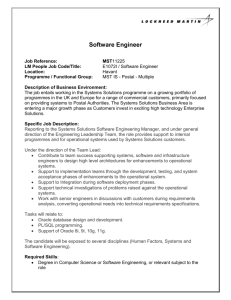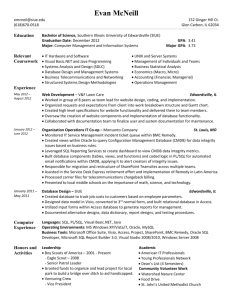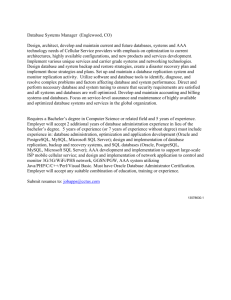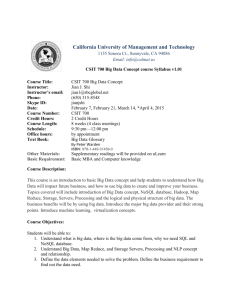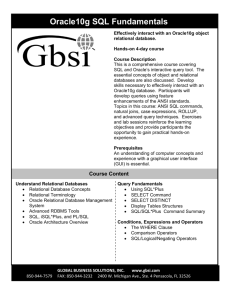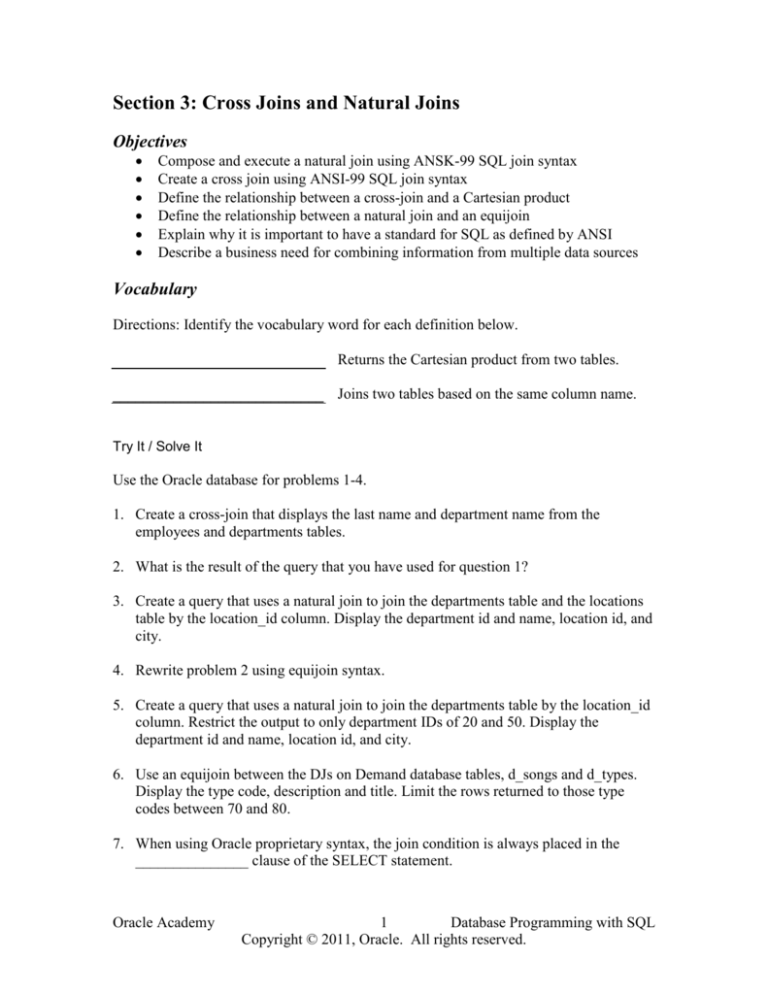
Section 3: Cross Joins and Natural Joins
Objectives
•
•
•
•
•
•
Compose and execute a natural join using ANSK-99 SQL join syntax
Create a cross join using ANSI-99 SQL join syntax
Define the relationship between a cross-join and a Cartesian product
Define the relationship between a natural join and an equijoin
Explain why it is important to have a standard for SQL as defined by ANSI
Describe a business need for combining information from multiple data sources
Vocabulary
Directions: Identify the vocabulary word for each definition below.
Returns the Cartesian product from two tables.
____________________________ Joins two tables based on the same column name.
Try It / Solve It
Use the Oracle database for problems 1-4.
1. Create a cross-join that displays the last name and department name from the
employees and departments tables.
2. What is the result of the query that you have used for question 1?
3. Create a query that uses a natural join to join the departments table and the locations
table by the location_id column. Display the department id and name, location id, and
city.
4. Rewrite problem 2 using equijoin syntax.
5. Create a query that uses a natural join to join the departments table by the location_id
column. Restrict the output to only department IDs of 20 and 50. Display the
department id and name, location id, and city.
6. Use an equijoin between the DJs on Demand database tables, d_songs and d_types.
Display the type code, description and title. Limit the rows returned to those type
codes between 70 and 80.
7. When using Oracle proprietary syntax, the join condition is always placed in the
_______________ clause of the SELECT statement.
Oracle Academy
1
Database Programming with SQL
Copyright © 2011, Oracle. All rights reserved.
8. When using ANSI/ISO SQL: 1999 syntax, the join condition is always placed in the
_______________ clause of the SELECT statement.
9. What is the advantage of learning ANSI/ISO SQL: 1999 syntax?
10. A/an _______________ can be used to preface the column name in order to clarify
which table and column are participating in the join.
11. Table aliases are created in the ________________ clause of the SELECT statement.
Oracle Academy
2
Database Programming with SQL
Copyright © 2011, Oracle. All rights reserved.





![Database Modeling and Implementation [Opens in New Window]](http://s3.studylib.net/store/data/008463861_1-79059dcf084d498c795a299377b768a6-300x300.png)
